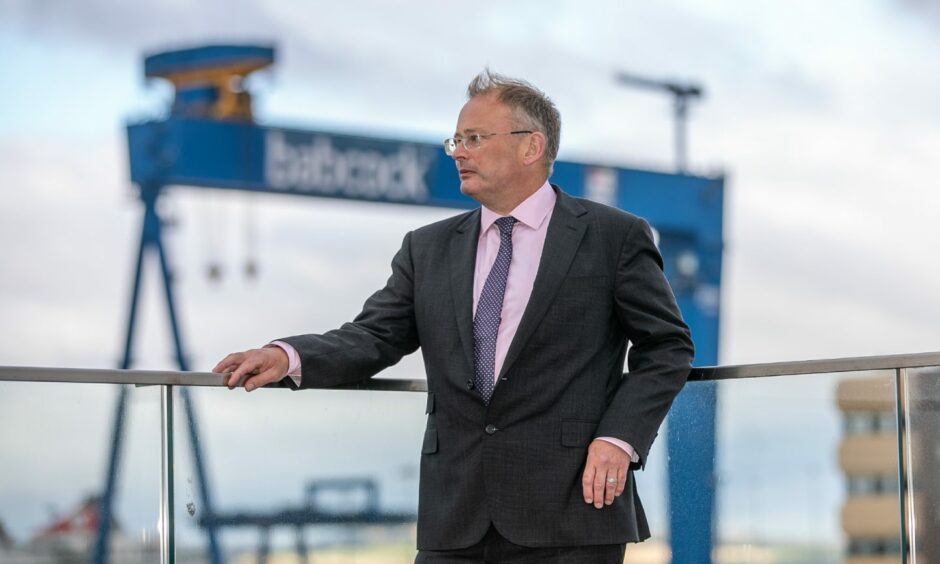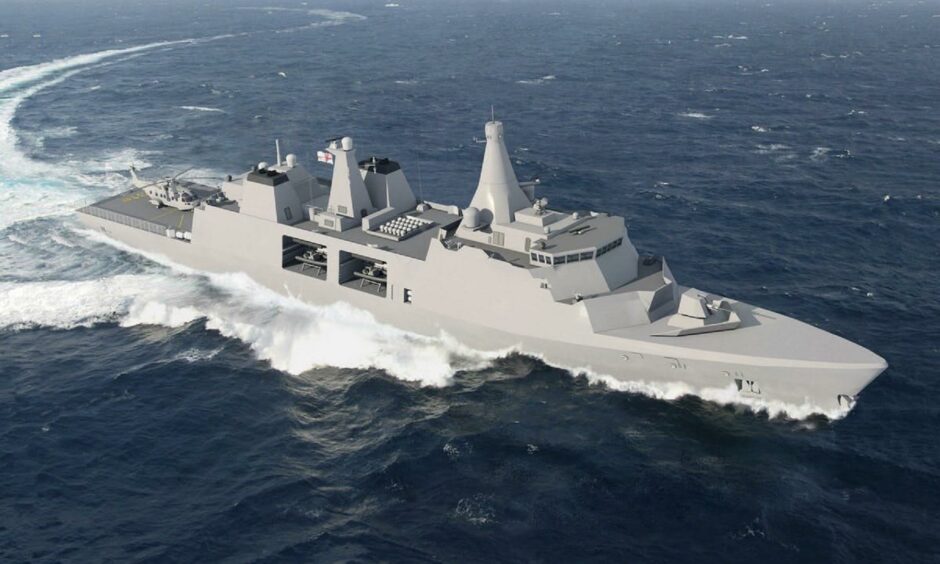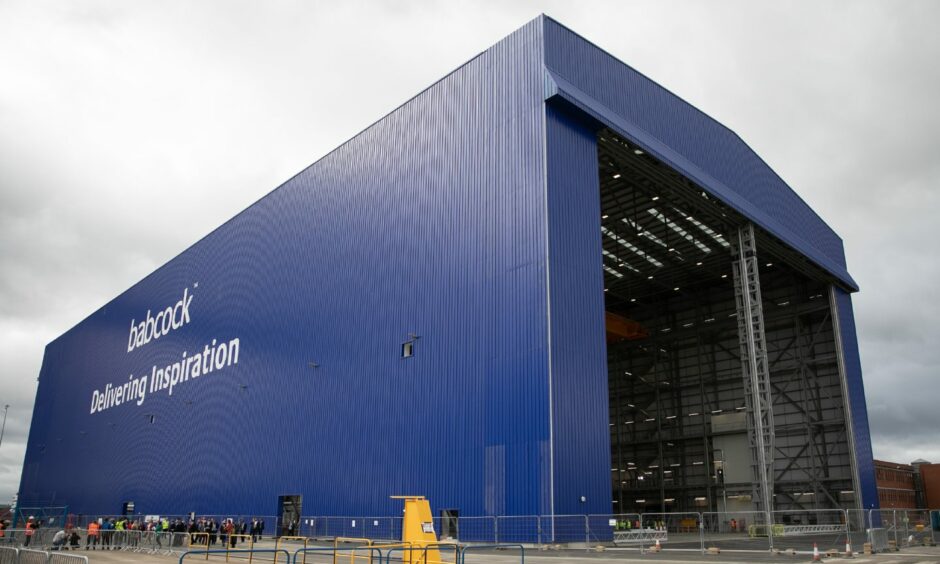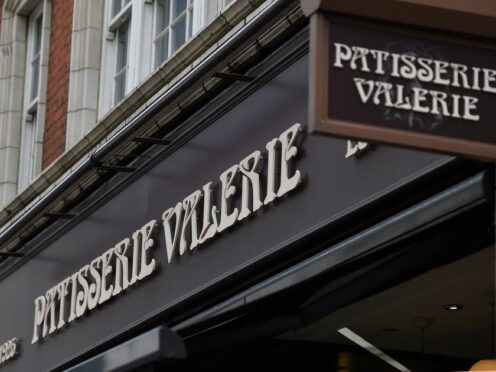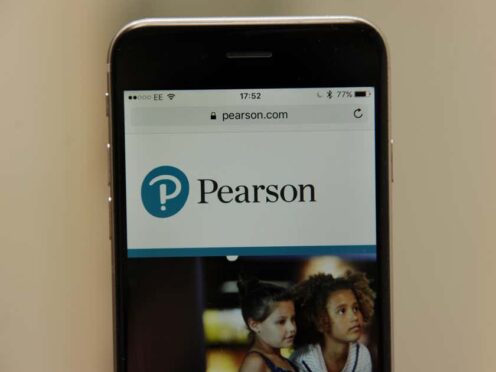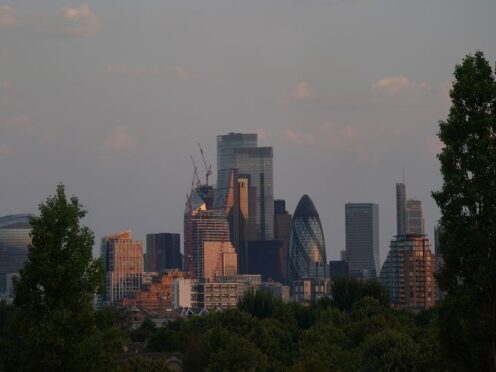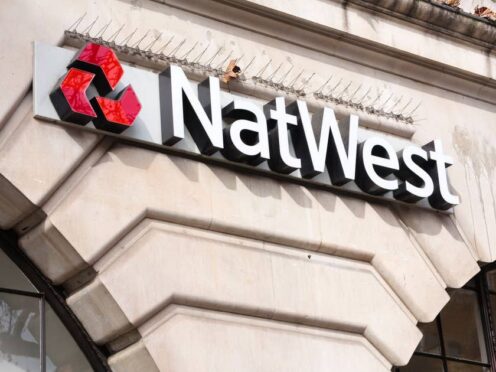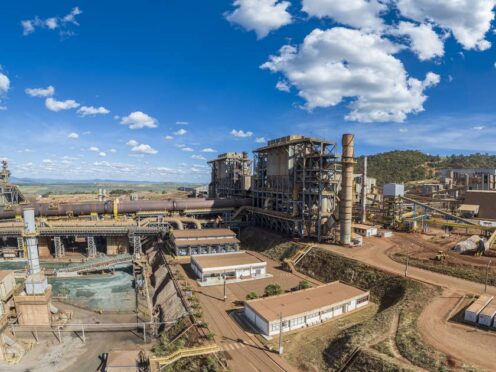Work is now under way on a £1.25 billion contract that will see five new warships built at Rosyth, and create 1,250 Fife jobs.
The steel cutting ceremony was held at Rosyth for the first of the new Type 31 warships.
The five ships are being built by Babcock for the Royal Navy.
Each frigate will cost £250 million. The project will support around 2,500 jobs across the UK at the its peak.
A total of 1,250 people will directly work on the project, while it will create the same number of additional supply chain jobs.
A ‘significant’ step, hails Babcock boss
Babcock chief executive David Lockwood hailed a “significant” step in the build process.
He said: “We are creating something we can all be very proud of.
“The T31 class will show the adaptability and capability of a modern warship created with British ingenuity and engineering at its core.
“I’m looking forward to seeing these magnificent vessels.”
The Type 31s being built at Rosyth are based on the proven Iver Huitfeldt design first used by Denmark nine years ago.
Some adaptations have been made to suit Royal Navy requirements.
The newest of the Royal Navy’s frigate fleet will undertake a variety of roles on operations.
The rules will include interception and disruption of illegal activity at sea, intelligence gathering, defence engagement and providing humanitarian support.
A ‘great milestone in renaissance of British shipbuilding’
Defence secretary Ben Wallace also attended the launch event in Rosyth.
Mr Wallace performed the ceremonial duty of the steel cutting, to mark the beginning of construction.
He said it was a “momentous occasion” for the programme.
“To cut the steel for the first of five new frigates that will be constructed here on our shores in the Firth of Forth, providing jobs and innovation to the area, is a real honour,” Mr Wallace said.
“Construction of this fleet will directly support 1,250 highly skilled jobs in Scotland.
“Equipped with the technologies at the forefront of the Royal Navy’s future vision, the entire type 31 fleet will be fitted with a range of capabilities, allowing it to undertake a variety of operations at sea.”
“By creating 150 new technical apprenticeships and constructing cutting-edge new facilities such as the great assembly hall, this programme will regenerate the talent to keep our shipbuilding engine ticking over for decades to come.”
He also described the event as a “great milestone in the renaissance of British shipbuilding”.
A ‘hugely exciting’ time
Scottish Secretary Alister Jack also welcomed the start of the construction process.
The Rosyth warships programme, along with work on the type 26 ships on the River Clyde, is supporting thousands of jobs in Scotland.
Mr Jack said: “It’s hugely exciting to see construction of the first of the British military’s new Type 31 warships beginning at Babcock’s Rosyth dockyard on the Firth of the Forth.
“When complete HMS Venturer – and the rest of the five Scottish built fleet – will help protect the UK and our NATO allies and provide humanitarian support.”
He said the fleet would also enhance Scotland’s shipbuilding reputation.
New £31m assembly hall officially opened
Babcock also opened its new assembly hall, the Venturer Building.
The hall, which measures 147 metres by 62m and 42m in height, cost more than £30m to build.
It is capable of housing two of the new type 31 frigates for parallel building and assembly.
That will enable uninterrupted assembly of the warships at Rosyth.
Gantry stair access inside the structure also removes the need for traditional scaffolding.
That gives workers access to the vessels without leaving the building.
The first of the new type 31 frigates is expected to be completed by 2023.
All five are due for completion by 2028.
